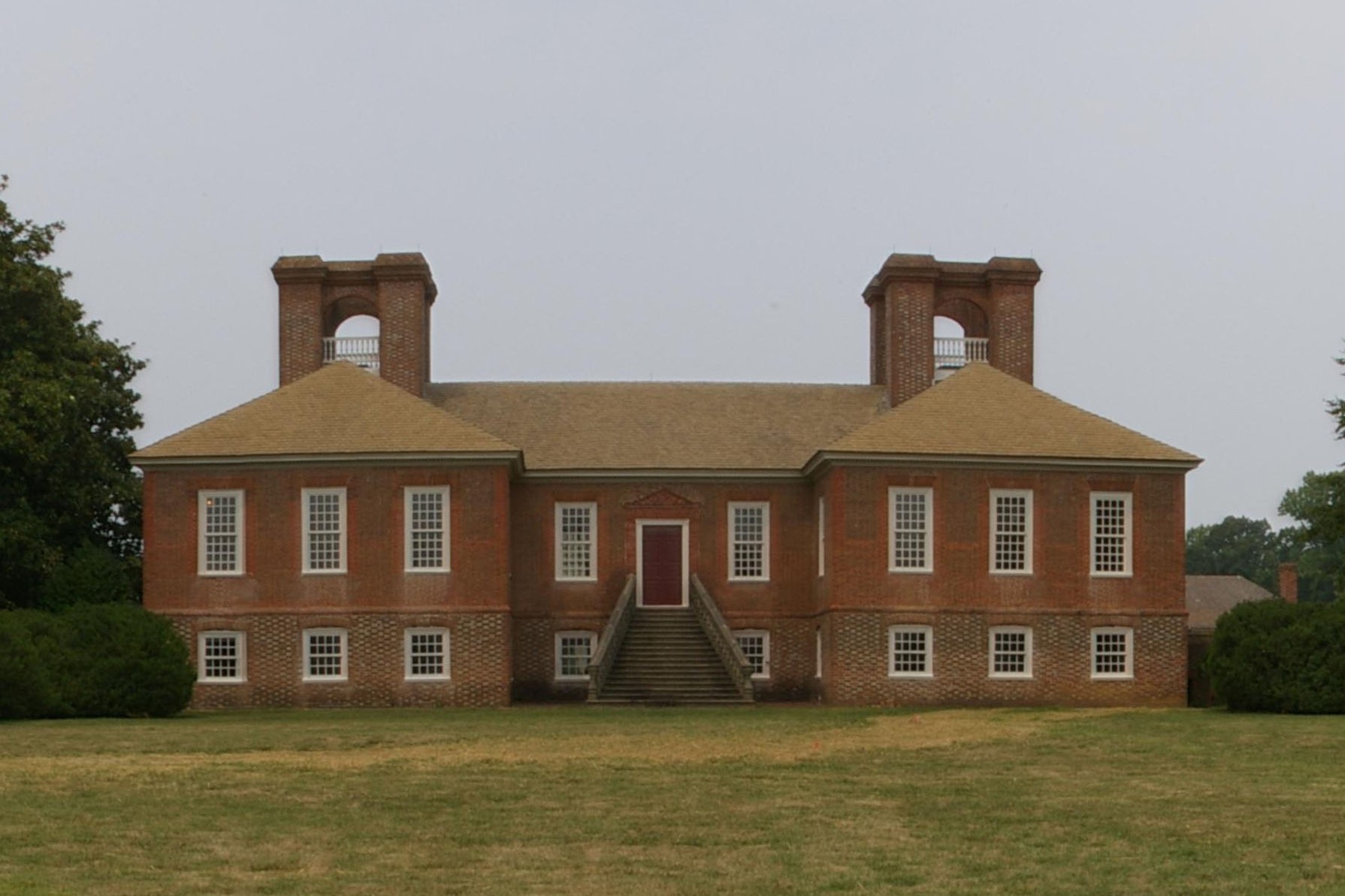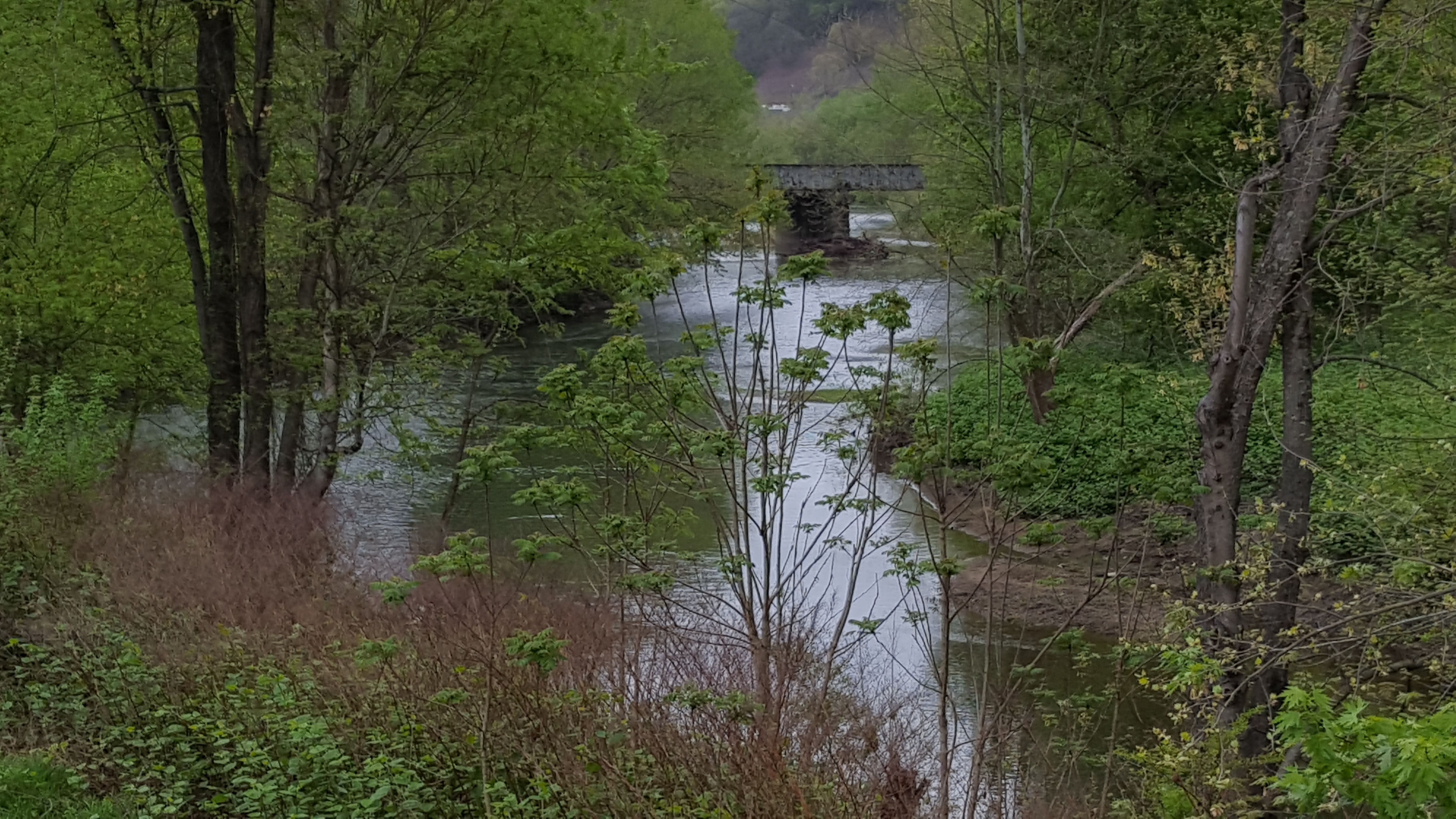|
John Floyd (Georgia Politician)
John Floyd (October 3, 1769 – June 24, 1839) was an American politician and brigadier general in the First Brigade of Georgia Militia in the War of 1812. One of the largest landowners and wealthiest men in Camden County, Georgia, Floyd also served in the Georgia House of Representatives, as well as the US House of Representatives. Early and family life John Floyd was born October 3, 1769, at Hilton Head, South Carolina in the Beaufort District, the only child of Charles Floyd and Mary Fendin. He was reared at Walnut Hill, his father's plantation on Hilton Head. Charles Floyd, owner and planter of Walnut Hill Plantation, had been born March 4, 1747, in Northampton County, Virginia, the son of Samuel Floyd and Susanna "Susan" Dixon. His parents both died in Northampton County when he was six. He went to live with his Dixon relatives, but three years later his uncle indentured the 9-year-old to a sea captain as a cabin boy. Charles Floyd spent fourteen years at sea, ... [...More Info...] [...Related Items...] OR: [Wikipedia] [Google] [Baidu] |
Georgia (U
Georgia most commonly refers to: * Georgia (country), a country in the Caucasus region of Eurasia * Georgia (U.S. state), a state in the Southeast United States Georgia may also refer to: Places Historical states and entities * Related to the country in the Caucasus ** Kingdom of Georgia, a medieval kingdom ** Georgia within the Russian Empire ** Democratic Republic of Georgia, established following the Russian Revolution ** Georgian Soviet Socialist Republic, a constituent of the Soviet Union * Related to the US state ** Province of Georgia, one of the thirteen American colonies established by Great Britain in what became the United States ** Georgia in the American Civil War, the State of Georgia within the Confederate States of America. Other places * 359 Georgia, an asteroid * New Georgia, Solomon Islands * South Georgia and the South Sandwich Islands Canada * Georgia Street, in Vancouver, British Columbia, Canada * Strait of Georgia, British Columbia, Canada ... [...More Info...] [...Related Items...] OR: [Wikipedia] [Google] [Baidu] |
American Revolutionary War
The American Revolutionary War (April 19, 1775 – September 3, 1783), also known as the Revolutionary War or American War of Independence, was a major war of the American Revolution. Widely considered as the war that secured the independence of the United States, fighting began on April 19, 1775, followed by the Lee Resolution on July 2, 1776, and the Declaration of Independence on July 4, 1776. The American Patriots were supported by the Kingdom of France and, to a lesser extent, the Dutch Republic and the Spanish Empire, in a conflict taking place in North America, the Caribbean, and the Atlantic Ocean. Established by royal charter in the 17th and 18th centuries, the American colonies were largely autonomous in domestic affairs and commercially prosperous, trading with Britain and its Caribbean colonies, as well as other European powers via their Caribbean entrepôts. After British victory over the French in the Seven Years' War in 1763, tensions between the motherla ... [...More Info...] [...Related Items...] OR: [Wikipedia] [Google] [Baidu] |
Jeffersonton, Georgia
Jefferson is an unincorporated community in Camden County, in the U.S. state of Georgia. History An old variant name is "Jeffersonton". Jefferson was platted in 1800 and once served as Camden County's county seat A county seat is an administrative center, seat of government, or capital city of a county or civil parish. The term is in use in Canada, China, Hungary, Romania, Taiwan, and the United States. The equivalent term shire town is used in the US .... References Unincorporated communities in Camden County, Georgia {{CamdenCountyGA-geo-stub ... [...More Info...] [...Related Items...] OR: [Wikipedia] [Google] [Baidu] |
Tabby Concrete
Tabby is a type of concrete made by burning oyster shells to create lime, then mixing it with water, sand, ash and broken oyster shells. Tabby was used by early Spanish settlers in present-day Florida, then by British colonists primarily in coastal South Carolina and Georgia. It is a man-made analogue of coquina, a naturally-occurring sedimentary rock derived from shells and also used for building. Revivals in the use of tabby spread northward and continued into the early 19th century. Tabby was normally protected with a coating of plaster or stucco. Origin Tabby's origin is uncertain. There is evidence that North African Moors brought a predecessor form of tabby to Spain when they invaded that kingdom: a form of tabby is used in Morocco today and some tabby structures survive in Spain, though in both instances the aggregate is granite, not oyster shells. It is likely that 16th-century Spanish explorers first brought tabby (which appears as ', ', ' and in early documents) t ... [...More Info...] [...Related Items...] OR: [Wikipedia] [Google] [Baidu] |
Plantation Complexes In The Southeastern United States
A plantation complex in the Southern United States is the built environment (or complex) that was common on agricultural plantations in the American South from the 17th into the 20th century. The complex included everything from the main residence down to the pens for livestock. Until the abolition of slavery, such plantations were generally self-sufficient settlements that relied on the forced labor of enslaved people. Plantations are an important aspect of the history of the Southern United States, particularly the antebellum era (pre-American Civil War). The mild temperate climate, plentiful rainfall, and fertile soils of the southeastern United States allowed the flourishing of large plantations, where large numbers of enslaved Africans or African Americans were held captive and forced to produce crops to create wealth for a white elite. Today, as was also true in the past, there is a wide range of opinion as to what differentiated a plantation from a farm. Typically, the ... [...More Info...] [...Related Items...] OR: [Wikipedia] [Google] [Baidu] |
Cumberland River
The Cumberland River is a major waterway of the Southern United States. The U.S. Geological Survey. National Hydrography Dataset high-resolution flowline dataThe National Map, accessed June 8, 2011 river drains almost of southern Kentucky and north-central Tennessee. The river flows generally west from a source in the Appalachian Mountains to its confluence with the Ohio River near Paducah, Kentucky, and the mouth of the Tennessee River. Major tributaries include the Obey, Caney Fork, Stones, and Red rivers. Although the Cumberland River basin is predominantly rural, there are also some large cities on the river, including Nashville and Clarksville, both in Tennessee. Also, the river system has been extensively altered for flood control. Major dams impound areas of both the main stem and many of its important tributaries. Geography Its headwaters are three separate forks that begin in Kentucky and converge in Baxter, KY, located in Harlan County. Martin's Fork st ... [...More Info...] [...Related Items...] OR: [Wikipedia] [Google] [Baidu] |
Satilla River
The Satilla River rises in Ben Hill County, Georgia, United States, near the town of Fitzgerald, and flows in a mostly easterly direction to the Atlantic Ocean. Along its approximately U.S. Geological Survey. National Hydrography Dataset high-resolution flowline dataThe National Map, accessed April 21, 2011 course are the cities of Waycross, Waynesville, and Woodbine. The Satilla drains almost of land, all of it in the coastal plain of southeastern Georgia. It has white sandbars and is the largest blackwater river situated entirely within Georgia. The Satilla enters the Atlantic Ocean about south of Brunswick, at the 31st parallel north. Satilla River Marsh Island The river derives its name from a Spanish officer named Saint Illa, and over time the name was corrupted to form the word Satilla. French explorer Jean Ribault named the river the Somme when he encountered it in 1562. The river was later given the name Aisne by Jacques le Moyne. Ecology The Satilla River is ... [...More Info...] [...Related Items...] OR: [Wikipedia] [Google] [Baidu] |
Treaty Of Colerain
The Treaty of Colerain was signed at St. Marys, Georgia in Camden County, Georgia, by Benjamin Hawkins, George Clymer, and Andrew Pickens for the United States and representatives of the Creek Nation, for whom Indian trader Langley Bryant served as an interpreter, on June 29, 1796, proclaimed on March 18, 1797, and codified as {{USStat, 7, 56. Colerain was a small community and the site of a U.S. Indian factory founded by James Seagrove. This treaty affirmed the binding of the Treaty of New York (1790). The Treaties of Hopewell and the Treaty of Holston (1791) established boundary lines between the Choctaws, Chickasaws, Cherokee, and the U.S. The Treaty of Colerain bound the Creek Nation to acknowledge the boundaries established in those treaties. It also established the boundary line between the Creek Nation and the United States. At the time of this treaty, the boundaries between Spanish Florida Spanish Florida ( es, La Florida) was the first major European lan ... [...More Info...] [...Related Items...] OR: [Wikipedia] [Google] [Baidu] |
Darien, Georgia
Darien () is a city in and the county seat of McIntosh County, Georgia, United States. It lies on Georgia's coast at the mouth of the Altamaha River, approximately south of Savannah, and is part of the Brunswick, Georgia Metropolitan Statistical Area. It is the second oldest planned city in Georgia and was originally called New Inverness. The population of Darien was 1,975 at the 2010 census. Geography Darien is located at (31.371134, −81.430742). According to the United States Census Bureau, the city has a total area of , all land. Demographics 2020 census As of the 2020 United States census, there were 1,460 people, 957 households, and 609 families residing in the city. 2010 census As of the 2010 United States Census, there were 1,975 people living in the city. The racial makeup of the city was 51.9% White, 44.1% Black, 0.1% Native American, 0.8% Asian, 0.1% Pacific Islander, 0.1% from some other race and 1.1% from two or more races. 1.9% were Hispanic or Latino of ... [...More Info...] [...Related Items...] OR: [Wikipedia] [Google] [Baidu] |
McIntosh County, Georgia
McIntosh County is a county located in the U.S. state of Georgia. As of the 2020 census, the population was 10,975, a drop of 23.4 percent since the 2010 census. The county seat is Darien. McIntosh County is included in the Brunswick, GA Metropolitan Statistical Area. History Colonial and Revolutionary period The area which was formally named McIntosh County was originally settled by the British in 1721 with the construction of Fort King George, which was part of a set of forts built as a buffer between the British colonies to the north and Spanish Florida to the south, under the direction of General James Oglethorpe. New Inverness (later named Darien) was founded in 1736 by Scottish Highlanders who were enticed to move to Georgia by General Oglethorpe. In 1760, the British built Fort Barrington on the north side of the Altamaha River about 12 miles (19 km) northwest of present-day Darien. It was used for decades as a transportation and communication center ... [...More Info...] [...Related Items...] OR: [Wikipedia] [Google] [Baidu] |
Richard Ferdinand Floyd
Richard Ferdinand Floyd was born in Camden County, Georgia, on July 7, 1810, to John and Isabella Floyd. His father, John Floyd (Georgia politician), served in the American army in the War of 1812 as a major general and was later elected to the United States House of Representatives. Floyd's childhood was spent on the family plantation, Fairfield, in Camden County. As he matured, he followed in his father's footsteps, serving as a captain of Georgia troops in the Second Seminole War and entering public service as sheriff of the county. After the Second Seminole War, Floyd moved to St. Augustine, Florida and was employed as a draftsman before moving on to manage a plantation in St. John's County, Florida. When the Civil War erupted, Florida Governor John Milton (Florida politician) appointed Floyd as a colonel in the Florida state troops and employed his as an aide-de-camp. Floyd was characterized as "a skillful officer, and a brave and honorable man, with a reputation as a ge ... [...More Info...] [...Related Items...] OR: [Wikipedia] [Google] [Baidu] |

%2C_Jekyll_Island%2C_GA.jpg)



